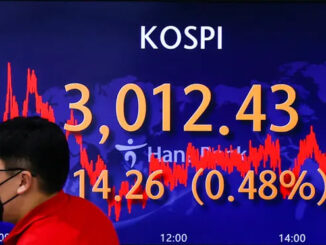
In an escalating geopolitical chess game, the United States is ramping up pressure on India to reduce its imports of Russian crude oil, tying the issue directly to the progress of bilateral trade negotiations. As of September 26, 2025, U.S. trade officials have made it clear that curbing these purchases is a prerequisite for lowering tariffs and finalizing a comprehensive trade deal.
This move comes amid broader U.S. efforts to isolate Russia economically, including similar calls to Europe to halt Russian energy imports in exchange for tougher sanctions on Moscow.
With India remaining one of Russia’s largest oil buyers, the standoff highlights tensions between energy security, trade ambitions, and the weaponization of sanctions—potentially accelerating dedollarization trends that could undermine the U.S. dollar’s global dominance.
The U.S.-India Trade Deal: Status and Stakes
The U.S.-India trade relationship has been under strain since the Trump administration imposed an additional 25% tariff on Indian imports in August 2025, effectively doubling duties on many goods to 50% in some cases.
This punitive measure was explicitly linked to India’s continued reliance on discounted Russian crude, which U.S. officials argue funds Moscow’s military activities.
Trade talks, led by figures like U.S. Trade Representative and Indian Commerce Minister Piyush Goyal, have been described as “constructive” by Indian officials, with both sides aiming for an early conclusion to a deal that could reduce tariffs below the current elevated levels.
However, progress remains contingent on India addressing U.S. concerns over Russian oil. A potential agreement could mirror aspects of recent U.S. pacts, such as the U.S.-Japan Trade Agreement signed earlier this month, which focused on reciprocity and market access.
Indian representatives have emphasized that a breakthrough is unlikely before November without a tariff rollback, citing unresolved sticking points like market barriers and subsidies.
The U.S. has also targeted specific sectors, imposing 100% tariffs on patented pharmaceuticals, though this is expected to have limited impact on India’s generic drug industry.
Overall, the deal’s status is positive but fragile, with Russian oil as the pivotal hurdle.
India’s Viewpoints: Balancing Energy Needs and Sovereignty
From New Delhi’s perspective, the U.S. demands overlook India’s energy realities. India has countered by requesting waivers to import oil from sanctioned nations like Iran and Venezuela, arguing that simultaneous restrictions on Russia, Iran, and Venezuela—supplying nearly 90% of its discounted crude—could trigger a global price spike and economic instability.
Indian officials have been firm, stating that the tariffs will not deter Russian imports, as energy security and affordability for its 1.4 billion population take precedence.
Critics in India view the pressure as hypocritical, pointing out that NATO ally Hungary still relies on over 80% Russian oil without facing similar repercussions.
Domestically, yielding to U.S. demands could spark backlash, damaging ties with Russia—a key defense and energy partner—and portraying India as bowing to external influence.
Instead, India advocates for diversified supplies, including U.S. LNG, but insists on pragmatic solutions rather than abrupt cuts.
This stance reflects India’s strategic autonomy, prioritizing multilateral forums like BRICS over unilateral U.S. directives.
Negative Impacts on the U.S. Dollar: Sanctions as a Double-Edged Sword
The weaponization of U.S. sanctions has long fueled global dedollarization efforts, and this episode with India could exacerbate the trend. By linking trade deals to energy politics, the U.S. risks pushing India closer to China and Russia, potentially forming stronger economic alliances that bypass the dollar.
Recent tariffs have already catalyzed reconciliation between India and China, with talks of enhanced trade pacts in non-dollar currencies like the yuan or rupee.
Experts warn that such shifts could erode the USD’s reserve status, as countries like India and China—major holders of U.S. debt—seek alternatives to mitigate sanction risks.
BRICS initiatives, driven by Russia and China, are promoting de-dollarization through local currency settlements, reducing reliance on SWIFT and U.S. financial systems.
If India pivots further toward an India-China-Russia bloc, it could accelerate this process, leading to higher U.S. borrowing costs, inflation, and diminished global influence.
Ironically, Trump’s protectionist policies, including reciprocal tariffs announced in February 2025, may hasten this backlash, as allies rethink dollar-denominated trade.
Insights from President Trump and the Administration
President Trump has been vocal on trade and energy, emphasizing reciprocal tariffs to level the playing field.
In recent X posts, he celebrated falling oil prices and billions in tariff revenue, blaming past leaders for allowing abuses by countries like China.
While not directly addressing India-Russia oil, Trump has engaged with Indian Prime Minister Narendra Modi, wishing him a happy birthday and discussing support for ending the Russia-Ukraine war.
The administration has echoed this through White House statements, highlighting successful trade deals with Japan and South Korea as models.
On the European front, U.S. Energy Secretary Chris Wright has offered assistance to wean allies off Russian energy, proposing U.S. LNG as a replacement under a $750 billion US-EU agreement by 2028.
Trump has signaled readiness for a “second phase” of sanctions on Russia, with Treasury Secretary Scott Bessent mentioning potential expansions to secondary tariffs on buyers like India.
These actions underscore the administration’s strategy to use energy leverage for broader geopolitical gains, including peace efforts in Ukraine.
Conclusion: A High-Stakes Energy Geopolitics Play
The U.S. push on India over Russian oil encapsulates the intertwined challenges of energy, trade, and currency dominance in 2025. While aimed at weakening Russia, it risks alienating a key partner and fueling dedollarization, potentially harming the USD more than Moscow. As negotiations continue, the outcome could reshape global alliances—either drawing India closer to the West or accelerating a multipolar world order centered on Asia.
The path to resolving the stalemate at the peace talks is through doing what President Trump does best: business deals. Getting President Putin to do business with the U.S. will go a long way toward protecting the US dollar, rather than the continued weaponization of the dollar against India. The world is already bifurcating into two markets. Those following Net Zero, green energy policies, and fiscal decline or going down the open energy path supporting without subsidies and market-driven solutions. It would be better to be a trading bloc with Russia, the Middle East, and Asia leaving the UK, and the EU behind if they choose not to reform their policies. Putin has telegraphed through the media how to end the war, and Zelensky has been caught missleading and even seemed to be lying at times. -Stu Turley
For now, both sides appear committed to dialogue, but the clock is ticking on a mutually beneficial resolution.
Avoid Paying Taxes in 2025
Crude Oil, LNG, Jet Fuel price quote
ENB Top News
ENB
Energy Dashboard
ENB Podcast
ENB Substack






